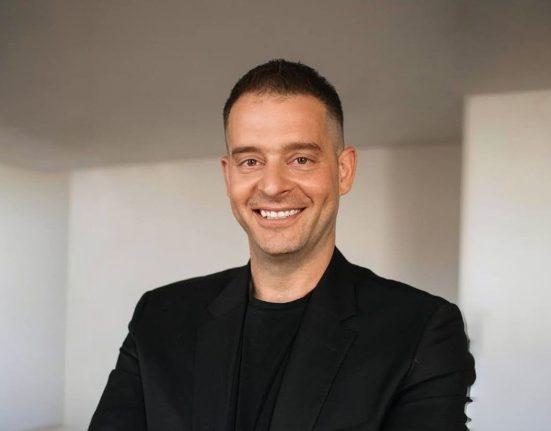Iconic sign for Sand Hill Road, with a green traffic light signaling “Go”, on Sand Hill Road in the … More
For decades, venture capital operated with a relatively straightforward playbook: find promising early-stage startups, invest modest sums across a portfolio of companies, and hope a few breakout successes would deliver outsized returns. But a quiet yet radical transformation is underway, with Lightspeed Venture Partners’ recent move to become a Registered Investment Advisor (RIA) representing perhaps the most telling signal yet of venture capital’s dramatic evolution.
This seemingly technical regulatory change actually represents a profound shift in strategy and capability. By registering as an RIA, Lightspeed—one of Silicon Valley’s most prominent venture firms—has effectively given itself permission to expand far beyond traditional venture investments. The firm can now purchase public stocks, execute private equity-style buyouts, build roll-up strategies, and dramatically scale its secondary market activities.
From Sand Hill Road to Wall Street
This metamorphosis isn’t happening in isolation. Several top-tier venture firms have been steadily expanding their scope and scale:
Andreessen Horowitz (a16z) became an RIA back in 2019, a move that initially raised eyebrows but has since proven prescient. The firm has since participated in the Twitter deal alongside Elon Musk, built an expansive crypto empire spanning both investment and infrastructure, and launched a wealth management platform. Ben Horowitz even recently said in a recent interview “The classic VC model is dead.”
Sequoia Capital, long considered the gold standard in venture investing, has evolved toward an “evergreen” model designed to hold investments for much longer periods, moving away from traditional fund structures with fixed time horizons.
Thrive Capital, founded by Josh Kushner, recently raised a specialized one billion dollar vehicle specifically designed to build and buy AI-native companies, blurring the lines between venture investing and company creation.
Perhaps most dramatically, General Catalyst has pursued healthcare investments so aggressively that it acquired an entire hospital system—and has openly dropped the VC label in favor of describing itself as an “investment company.”
Why Now? The Perfect Storm
This transformation comes amid several converging factors creating both opportunity and necessity for leading venture firms:
First, the traditional venture model is showing signs of strain. The “spray and pray” approach—making 25 early bets and hoping for two unicorns—no longer delivers the same reliable returns in a market where company-building costs have escalated and exit timelines have extended.
Second, the explosion of secondary market activity has created significant new opportunities. As private companies stay private longer, providing liquidity to early investors and employees has become a massive business opportunity that traditional VC fund structures weren’t designed to capture.
Third, artificial intelligence is creating unprecedented opportunities to transform existing businesses. As one industry insider put it, “AI is a horizontal technology that creates vertical opportunities across every industry—opportunities that often involve buying and transforming existing businesses rather than starting from scratch.”
Finally, the boundaries between public and private markets continue to blur. Traditional venture firms increasingly recognize that arbitrary distinctions between private and public investing can leave significant value on the table.
The New Playbook Emerges
As these changes accelerate, a new investment playbook is taking shape. Rather than simply making passive minority investments in early-stage companies, leading firms are now:
- Buying controlling stakes in existing businesses
- Building companies from the ground up through studio models
- Rewiring traditional businesses with AI capabilities
- Holding investments for much longer periods
- Creating dedicated platforms for secondary liquidity
For Lightspeed specifically, the RIA status opens doors to a staggering expansion of its addressable market. Beyond the roughly 20 billion dollar annual U.S. venture capital market, the firm can now tap into the 100 trillion dollar-plus global public equities market and the rapidly growing 100 billion dollar-plus secondaries market.
Looking Ahead: The Next Five Years
Industry insiders project several key developments over the next three to five years:
- Early-stage venture building will intensify. Rather than simply funding startups, more firms will actively build companies from scratch through dedicated studio models.
- AI-native roll-up strategies will proliferate. Firms will increasingly acquire multiple businesses in sectors like healthcare, infrastructure, and fintech, then transform them using AI capabilities.
- VCs will increasingly acquire established businesses. Moving beyond minority stakes in startups, leading firms will purchase controlling interests in mature companies with significant transformation potential.
- Dedicated secondaries platforms will expand. The demand for liquidity in late-stage private companies will drive the creation of specialized vehicles designed specifically to provide exit opportunities for early investors and employees.
- Public market crossovers will become commonplace. The artificial distinction between private and public investing will continue to erode as more firms invest across the full spectrum of company maturity.
- Fund infrastructure will scale dramatically. As firms expand their scope, they’ll need to build institutional-grade infrastructure reminiscent of traditional private equity platforms.
- Mid-tier VC firms will consolidate. As the leaders expand their capabilities, mid-sized firms will face increasing pressure to either specialize or merge to achieve competitive scale.
Implications for Entrepreneurs and Investors
For entrepreneurs, these changes create both opportunities and challenges. The emergence of more sophisticated, well-resourced investors means potentially more support for company building, but also more complex relationships with investors who may have multiple objectives beyond simply supporting a founder’s vision.
For limited partners (LPs) who invest in venture funds, the transformation creates new considerations around manager selection, fee structures, and portfolio construction. As venture firms expand their mandates, LPs must evaluate whether these broader platforms deliver superior returns or simply more fee revenue for the managers.
The Mini-Blackstones in Hoodies
The transformation underway has led some industry observers to characterize leading venture firms as “mini-Blackstones in hoodies”—combining the comprehensive investment approach of major private equity platforms with the technological focus and cultural orientation of traditional venture capital.
This description captures both the ambition and the inherent tension in this evolution. Venture capital emerged as a specialized form of investing precisely because building early-stage technology companies required a different mindset, skillset, and structure than traditional asset management. Whether firms can successfully expand their mandates while maintaining their distinctive capabilities remains an open question.
What seems certain is that this is just the beginning of a profound transformation. As Lightspeed’s move to become an RIA demonstrates, the industry’s leaders are betting that the future belongs to comprehensive investment platforms rather than specialized venture funds.
For entrepreneurs, investors, and the broader technology ecosystem, the stakes couldn’t be higher. The mutation of venture capital is reshaping not just how companies are funded, but how they’re built, scaled, and ultimately realized—a transformation that will influence the technology landscape for decades to come.







